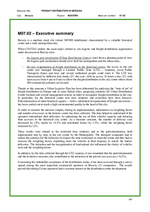Incentives for improving load rates in inner-city freight distribution
Summary
The goal of this measure was to introduce a pilot project in a city-centre area of Gothenburg’s existing environmental zone, with criteria not only for emissions but also for vehicle loads, and with incentives for suppliers, hauliers and retailers to coordinate and consolidate deliveries.
Implementing sustainable mobility
The centre of Gothenburg has suffered for many years from severe congestion due to heavy goods vehicles unable to find space to load and unload. Lorries are sometimes forced to drive around the city centre repeatedly in search of appropriate space to make their delivery.
The pilot project was designed as a voluntary scheme in cooperation with the transport industry.
The main elements were to:
- analyse vehicle load rates;
- establish restrictions on entering the city’s environmental zone;
- develop a communication system for measuring and reporting vehicle load rates; and
- create dedicated unloading areas for those companies meeting the defined criteria.
Progress
Eight vehicles of 2.2 tonnes or above were involved in testing the system in the pilot project. The project area was defined as around 2 square kilometres within Vallgraven and Nordstaden, part of the existing environmental zone. A GPS was installed in each vehicle for the registration and control of routes. A digital pen was developed to register the vehicle load rate on a specially designed form. The information on this form was sent via Bluetooth from the digital pen to a database, which calculated the load rate for each day and displayed the results on a website.
The criteria for distribution vehicles entering the city-centre zone were defined as a combination of a 65 percent load factor and a comparison between stopping time and running time, in combination with the limits for emission levels already in place in the environmental zone. Participants were provided with positive incentives to encourage them to respect the criteria for improving their load factor.
Outcomes
The measure was well received by drivers, transport companies, the municipality and businesses, and communication among all actors throughout the project was very good.
The consolidation of goods in order to increase the load factor is very much a question of business administration. Regulations in city centres must be changed to create more suitable conditions for distribution. Changing the legal framework, for example to allow restricted vehicle access to certain pedestrian areas, would improve accessibility for suppliers. Such streets have no parking places or loading zones, but vehicles can stop outside the store for unloading.
One of the most important conclusions is that, in order for such a scheme to become successful on a large scale, the restrictions imposed must be combined with incentives.








